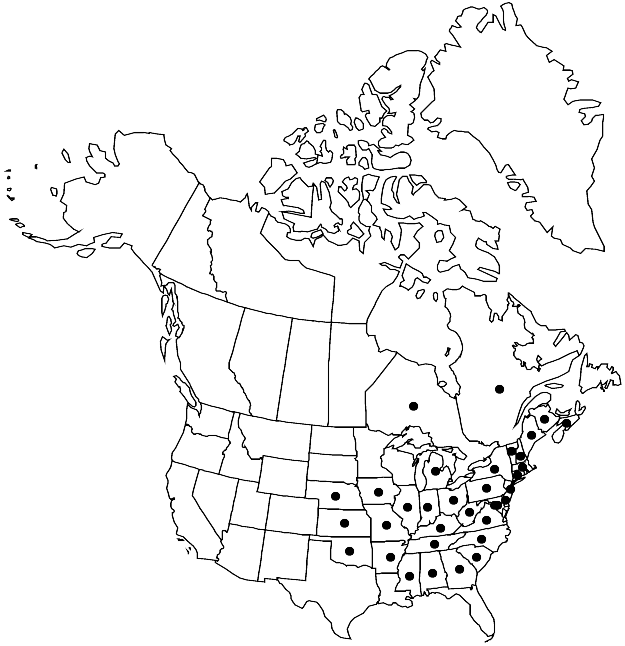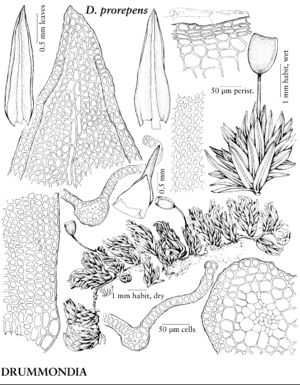Difference between revisions of "Drummondia prorepens"
Mem. Torrey Bot. Club 4: 180. 1894.
FNA>Volume Importer |
imported>Volume Importer |
||
| (2 intermediate revisions by 2 users not shown) | |||
| Line 69: | Line 69: | ||
|publication year=1894 | |publication year=1894 | ||
|special status=Endemic;Illustrated | |special status=Endemic;Illustrated | ||
| − | |source xml=https:// | + | |source xml=https://bitbucket.org/aafc-mbb/fna-data-curation/src/2e0870ddd59836b60bcf96646a41e87ea5a5943a/coarse_grained_fna_xml/V28/V28_47.xml |
|genus=Drummondia | |genus=Drummondia | ||
|species=Drummondia prorepens | |species=Drummondia prorepens | ||
Latest revision as of 21:36, 5 November 2020
Plants olive green, dark green, or yellow-brown. Stem leaves channeled, concave, 1.1–1.8 mm; apex sometimes incurved; costa broadly channeled; alar cells yellow, ± inflated at marginal insertion; basal laminal cells 6–10 µm. Perichaetial leaves closely clasping seta, broadly lanceolate, to 2 mm, apex acute or acuminate, basal laminal cells rectangular, yellowish green. Seta dextrorse. Capsule 0.9–1.3 mm, sharply contracted to seta, neck absent; exostome teeth 3–6 cells high, rudimentary, truncate. Spores rounded-quadrate to elliptic-rectangular, 70–100 µm in longest dimension, almost smooth, brown.
Habitat: Trunks and branches of deciduous trees, dry, upland forests, cedar glades, conifers, logs
Elevation: low to moderate elevations
Distribution

N.B., N.S., Ont., Que., Ala., Ark., Conn., Del., D.C., Ga., Ill., Ind., Iowa, Kans., Ky., Maine, Md., Mass., Mich., Miss., Mo., Nebr., N.H., N.J., N.Y., N.C., Ohio, Okla., Pa., S.C., Tenn., Vt., Va., W.Va.
Discussion
Drummondia prorepens is characterized by long, creeping stems with many erect branches bearing terminal sporophytes. This habit, combined with the cucullate calyptrae, the smooth, ovate capsules with 16 truncate exostome teeth, the lack of stomata, and the undifferentiated basal laminal cells, is absolutely diagnostic.
Selected References
None.
